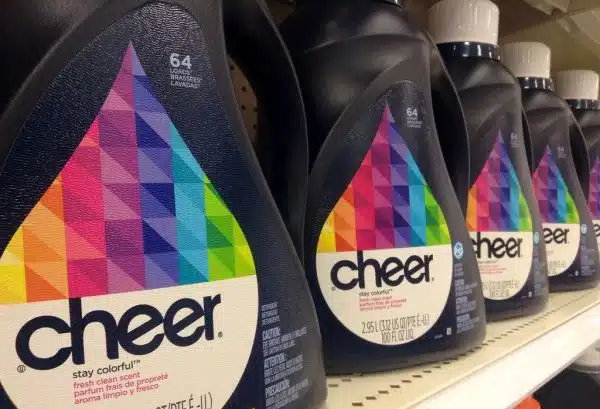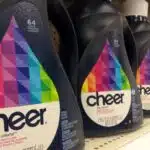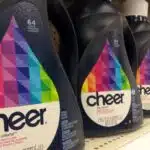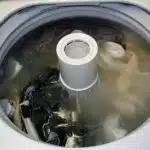As a laundry detergent ingredients expert, I have spent years researching and studying the various components that make up our everyday household cleaning products. The science behind these ingredients is fascinating and essential for understanding how they work to remove dirt and stains from our clothes. In this article, we will explore the different types of laundry detergent ingredients and their functions, providing an in-depth analysis of their properties.
Understanding the composition of laundry detergents can help individuals make informed decisions about which products to purchase for their specific needs. From surfactants to enzymes, each ingredient plays a significant role in removing soils from fabric surfaces. By examining the chemical structure and properties of these components, we can gain insight into their mechanisms of action and optimize their performance for maximum efficiency. Join me as we delve into the world of laundry detergent ingredients and unravel the mysteries behind how they work.
Surfactants: What They Are And How They Work
Laundry detergents are one of the most widely used household cleaning products. They are formulated to remove dirt and stains from clothing, bedding, and other washable items. The key ingredient that makes this possible is surfactants. Surfactants are compounds that lower the surface tension between two liquids or between a liquid and a solid, allowing them to mix more easily.
Surfactants play a critical role in various types of laundry detergent formulations. For example, they help to disperse and suspend dirt and grease in water so that they can be washed away more easily. In addition, they also help to emulsify oils and fats, which are common components of many types of stains. This property makes surfactants particularly useful in removing greasy stains like oil or butter.
While surfactants are critical ingredients in laundry detergents, their environmental impact cannot be ignored. Some surfactants can contribute to water pollution by disrupting aquatic ecosystems. However, many modern laundry detergents use biodegradable surfactants that break down quickly in the environment, reducing their impact on aquatic life. Overall, while surfactants play an essential role in making effective laundry detergents, it is essential to consider their environmental impact when formulating these products.
Builders: The Key to Water Softening
The next critical component in laundry detergent formulation is builders. Builders are compounds that help to soften hard water by removing minerals like calcium and magnesium ions from the water. These minerals can interfere with the cleaning action of soap by forming insoluble precipitates that leave residues on fabrics after washing. Builders work by chelating these minerals or by converting them into soluble forms that can be rinsed away with the wash water.
Builders: The Key To Water Softening
Water hardness is a common problem that many households face when it comes to doing laundry. Hard water contains high levels of minerals such as calcium and magnesium ions which can interfere with the effectiveness of laundry detergents. As a result, clothes may not come out as clean as they should, and the washing machine may also become clogged with mineral deposits over time.
Builders are the key ingredients in laundry detergents that help to soften hard water by binding to these minerals and preventing them from interfering with the cleaning process. There are two primary types of builders used in laundry detergents – phosphate builders and non-phosphate builders. Phosphate builders were commonly used in laundry detergents until their negative impact on the environment was discovered. Nowadays, non-phosphate builders such as zeolites, citrates, and polycarboxylates are used instead.
Zeolites are particularly effective at removing calcium and magnesium ions from hard water while citrates work by binding to metal ions. Polycarboxylates are versatile builders that can bind to both metal ions and dirt particles making them an excellent choice for all types of washing machines. By incorporating these different types of builders into laundry detergents, manufacturers can ensure that their products work effectively in both hard and soft water conditions.
By using the right type of builder in your laundry detergent, you can ensure that your clothes come out clean every time regardless of how hard your water is. However, builders are just one piece of the puzzle when it comes to getting rid of tough stains. In the next section, we will explore how enzymes – nature’s stain removers – work together with other ingredients in laundry detergents to break down even the most stubborn stains.
Enzymes: Nature’s Stain Removers
Enzymes are a common ingredient in many laundry detergents, as they are highly effective at breaking down proteins, lipids, and carbohydrates found in a variety of stains. The action of enzymes on stains is highly specific, meaning that different enzymes are needed for different types of stains. Temperature, pH, and the presence of mineral ions can all affect the activity of enzymes, so it is important to include stabilizers in laundry detergents to ensure optimal enzyme performance. Enzyme-based laundry detergents have been found to be more effective than traditional detergents, making them a popular choice among consumers.
Enzymes In Detergents
Enzymes in Detergents: An Expert’s Insight
When it comes to battling tough stains, enzymes are nature’s best allies. Enzymes are protein molecules that work as catalysts to break down and remove stubborn stains from our laundry. The most common types of enzymes used in laundry detergents are proteases, amylases, and lipases. Proteases help break down protein-based stains such as blood and grass, while amylases target starch-based stains like chocolate and gravy. Lipases, on the other hand, tackle oily or greasy stains.
To maximize the effectiveness of enzymes in laundry detergents, it is important to follow some basic rules. Firstly, use warm water when washing clothes as it helps activate the enzymes. Secondly, pre-treat heavily soiled areas with a stain remover containing enzymes before washing. Thirdly, avoid using too much detergent as excess suds can hinder enzyme action. Lastly, make sure to add the detergent directly into the washer drum before adding clothes to allow enough time for the enzymes to activate.
Some people may wonder if enzyme-free detergents are effective. While these detergents may effectively clean everyday dirt and grime from clothes, they lack the power of enzymes when it comes to removing tough stains. Enzyme-free detergents rely solely on surfactants or cleaning agents that only break down surface-level dirt but not deep-seated stains. For best results in stain removal, we recommend using a detergent that contains a blend of both enzymes and surfactants.
In conclusion, enzymes play a crucial role in laundry detergents by breaking down stubborn stains that traditional cleaning agents cannot touch. By following simple steps like using warm water and pre-treating heavily soiled areas before washing clothes with an enzyme-containing detergent blend; you can achieve optimal results in stain removal every time you do your laundry!
Enzyme Action On Stains
Enzymes are critical components of laundry detergents, and their action on stains is fascinating. Enzymes are protein molecules that act as catalysts to break down and remove stubborn stains from our clothes. The most common types of enzymes used in laundry detergents are proteases, amylases, and lipases. Proteases help break down protein-based stains such as blood and grass while amylases target starch-based stains like chocolate and gravy. Lipases, on the other hand, tackle oily or greasy stains.
The optimal conditions for enzyme action vary depending on the type of enzyme. For instance, protease enzymes work best at temperatures between 40-60°C and pH levels of 8-11. Amylase enzymes perform optimally at temperatures ranging from 50-70°C and pH levels between 6-8. Lipase enzymes require a more acidic environment with pH levels ranging from 4-6 for optimal performance. However, it’s worth noting that some enzymes may become unstable when exposed to high temperatures or extreme pH levels, affecting their activity and shelf life.
To ensure maximum efficiency in removing stains with enzyme-containing detergents, it’s crucial to use the right temperature range for each type of stain you’re dealing with. Pre-treating heavily soiled areas before washing clothes with an enzyme-containing detergent blend may also significantly improve stain removal results. While enzyme-free detergents may clean everyday dirt and grime from clothes effectively, they lack the power of enzymes when it comes to removing tough stains. Thus, using a detergent blend containing both surfactants and enzymes remains the most effective way to remove stubborn stains from your laundry.
Oxygen Bleach: A Powerful Alternative
Despite the potential benefits of oxygen bleach, some people may still have doubts about its effectiveness as a laundry detergent ingredient. However, it is important to note that oxygen bleach can be a powerful alternative to traditional detergents and chlorine bleach.
When using oxygen bleach, it is important to follow the recommended guidelines for optimal results and safety precautions. Some benefits of using oxygen bleach include its ability to remove tough stains, brighten colors, and improve overall fabric quality. Additionally, compared to chlorine bleach, oxygen bleach is less harsh on fabrics and does not emit harmful fumes.
For those who prefer natural alternatives or DIY options for laundry detergent ingredients, oxygen bleach can be a great option. It is eco-friendly and biodegradable, making it safer for both the environment and individuals using it. When comparing oxygen bleach to traditional detergents, it is clear that the former stands out as a more effective and eco-friendly option.
Moving forward into discussing fragrances and dyes: adding scent and color, it is important to understand how these ingredients can affect both the appearance and performance of laundry detergents.
Fragrances And Dyes: Adding Scent And Color
Oxygen bleach is a powerful alternative to traditional chlorine bleach. It works by releasing oxygen when mixed with water, which then breaks down stains and dirt particles. Oxygen bleach is also environmentally friendly and safe for use on colored fabrics without causing fading or damage.
When it comes to choosing a laundry detergent, scent options are often a top priority for consumers. Fragrances are used to mask the smell of chemicals and provide a pleasant aroma to clothing. However, it is important to consider the safety of these fragrances as they can cause skin irritation or allergic reactions in some individuals. Additionally, some synthetic fragrances are made from petroleum-based ingredients which can be harmful to the environment.
Dyes are another ingredient commonly found in laundry detergents that add color to clothing. While these dyes are generally safe for use, it is important to choose products that have been tested for dye safety. Some cheaper laundry detergents may contain low-quality dyes that can bleed onto other fabrics or cause skin irritation. When choosing a laundry detergent, look for products that have been tested for dye safety and avoid those with questionable ingredients.
As we consider other important components of laundry detergents, ph adjusters come into play. These ingredients help balance the acidity of the detergent mixture which can affect its effectiveness at cleaning clothes properly. Understanding how ph adjusters work in conjunction with other ingredients will enable you to make an informed decision when selecting a product that suits your needs best.
Ph Adjusters: Balancing The Acidity
- pH Adjusters are substances used to adjust the acidity of a solution to within a certain range.
- Acidity balance is a key factor in the performance of laundry detergent ingredients, and pH Adjusters are used to ensure that balance is achieved.
- Acids and Bases are two types of compounds used to adjust the pH of a solution, with Acids lowering the pH and Bases increasing the pH.
- In laundry detergents, Acids are often used to reduce the alkalinity of an alkaline-based detergent, while Bases are used to reduce the acidity of an acid-based detergent.
- The selection of the appropriate type and amount of pH Adjusters will depend on the desired performance of the detergent, and the source of the ingredients used.
- Different types of pH Adjusters have varying effects on the acidity of a solution, and should be chosen carefully to ensure the desired performance is achieved.
Ph Adjusters
As someone who has dedicated their career to studying laundry detergent ingredients, I am well-versed in the role that pH adjusters play in balancing the acidity of these products. Acidic pH adjusters and alkaline pH adjusters are both essential components of modern-day laundry detergents, allowing them to deliver optimal cleaning performance.
Acidic pH adjusters work by neutralizing basic substances found in fabrics, such as sweat or soap scum. These ingredients typically have a pH level between 1 and 7, making them ideal for breaking down acidic stains like coffee or wine. On the other hand, alkaline pH adjusters function by raising the overall pH level of the detergent solution to effectively dissolve oily stains like salad dressing or motor oil. The perfect balance of acidic and alkaline pH adjusters is crucial in creating a powerful detergent that can handle any type of stain.
While it may seem like a simple concept, adjusting the pH level of laundry detergent is a complex process that requires extensive research and development. Luckily, with advances in technology and a deep understanding of chemistry principles, manufacturers are able to create products that not only clean clothes effectively but also maintain their integrity over time. As we continue to explore new frontiers in laundry detergent science, I am excited to see what advancements will be made in this critical area of formulation.
Acidity Balance
As someone who has dedicated their career to studying laundry detergent ingredients, I understand the importance of achieving the perfect acidity balance in these products. Acidity testing is a crucial step in determining the optimal pH level for a detergent solution. By measuring the concentration of hydrogen ions present in a sample, we can determine whether it is too acidic or too alkaline and adjust accordingly.
pH adjustment techniques are used to balance the acidity and alkalinity of laundry detergents. This process involves adding either an acidic or alkaline compound to the solution to achieve the desired pH level. It is a delicate balancing act, as even small changes in pH can have a significant impact on cleaning performance. As a detergent ingredients expert, I am constantly researching new ways to optimize this process and create products that deliver exceptional cleaning results.
Maintaining acidity balance is critical for ensuring that laundry detergents are effective at removing stains while preserving fabric integrity over time. By carefully selecting and combining pH adjusters, manufacturers can create powerful formulations that tackle even the toughest stains without damaging clothes. As we continue to explore advancements in this area of formulation, I am excited about the potential for new breakthroughs that will make doing laundry easier and more efficient for everyone.
Acids And Bases
As a laundry detergent ingredients expert, achieving the perfect pH level is crucial in creating effective cleaning solutions. One essential aspect of pH adjustment is understanding the concept of acids and bases. Acids are substances that release hydrogen ions, while bases accept them. Neutralization reactions occur when an acid and a base combine to form water and a salt. This process can be used to balance the acidity of laundry detergents by adding a specific amount of acidic or basic compounds.
To determine the optimal pH level for a detergent solution, pH indicators are used to measure the concentration of hydrogen ions present in a sample. The ideal range for laundry detergents is between 6-8 on the pH scale, as this ensures effective stain removal without damaging fabrics over time. Achieving this balance involves using different types of acidic or basic compounds such as citric acid, sodium hydroxide, or phosphoric acid.
Maintaining acidity balance through pH adjustment techniques is critical for creating powerful formulations that provide exceptional cleaning results without harming clothes. As we continue to explore advancements in this area of formulation, neutralization reactions will remain an essential tool in balancing acidity levels effectively. By carefully selecting and combining pH adjusters with appropriate indicators, manufacturers can create products that tackle even the toughest stains while preserving fabric integrity over time.
Chelating Agents: Removing Mineral Deposits
Despite the numerous benefits that hard water provides, mineral buildup can be a nuisance. It leaves unsightly stains on fabrics and fixtures. These stains can be tough to remove with regular detergents. However, this is where chelating agents come in handy.
Chelating agents are compounds that bind to metallic ions in hard water and prevent them from depositing onto surfaces, thus removing hard water stains. They work by forming a complex with the metal ion and preventing it from reacting with other substances. This leads to a cleaner laundry and fewer deposits on appliances.
Preventing mineral buildup is crucial in maintaining the longevity of your appliances. As mineral deposits accumulate over time, they can clog pipes and damage heating elements in washing machines and dishwashers. Chelating agents are effective in preventing such damage by removing the minerals before they can build up.
In summary, chelating agents play an essential role in removing hard water stains and preventing mineral buildup. Their ability to bind to metallic ions makes them effective at keeping appliances free from damaging deposits. In the next section, we will explore another crucial ingredient in laundry detergents – solvents – that help break down grease and oil stains on fabrics and surfaces.
Solvents: Breaking Down Grease And Oil
Solvents are chemical compounds used to break down grease and oil, and are often found in laundry detergents. Common types of solvents include alcohols, ketones, esters, and hydrocarbons. Solvents work by decreasing the surface tension of the grease and oil. This allows the detergent’s surfactants to more easily penetrate the grease and oil and suspend them in the water. This increases the cleaning power of detergents, allowing them to remove stubborn dirt and stains. The use of solvents also helps protect the fabric fibers from becoming damaged by the grease or oil. Finally, solvents help reduce the amount of energy used in the laundry process, making it more efficient and cost effective.
Types Of Solvents
Laundry detergents contain various types of solvents that work together to break down grease and oil stains on clothes. One type of solvent commonly used in laundry detergents is a dry cleaning solvent. This type of solvent is effective in removing tough stains such as oil and grease because it dissolves the stain molecules, making them easier to wash away.
Another important type of solvent found in laundry detergents is a stain removal solvent. Stain removal solvents are typically made from strong chemicals that can break down even the toughest stains. These solvents work by breaking down the molecular bonds between the stain and the fabric, which allows the detergent to lift the stain away from the fabric during washing.
Overall, solvents play a crucial role in laundry detergents by helping to break down tough stains and remove them from clothing. With a combination of dry cleaning and stain removal solvents, laundry detergents can effectively clean even the most stubborn stains. By understanding how these different types of solvents work, consumers can choose a detergent that best suits their specific needs for optimal cleaning performance.
Solvent Mechanisms Of Action
As a laundry detergent ingredients expert, it is important to understand the mechanisms of action behind solvents in breaking down grease and oil. Solvent safety is crucial in the formulation of laundry detergents, as some solvents can be harmful to both humans and the environment. Therefore, it is essential to carefully select and use solvents that are safe and effective.
Solvents work by dissolving or breaking down the molecular bonds between stains and fabrics, allowing them to be washed away easily during laundering. Some solvents may also act as surfactants that lower the surface tension of water, enhancing its ability to penetrate fabrics and remove stains. However, it is important to note that different types of stains may require different types of solvents for optimal cleaning performance.
When formulating laundry detergents, it is important to consider not only the effectiveness of solvents in cleaning clothes but also their impact on human health and the environment. Many traditional solvents used in laundry detergents have been linked to respiratory problems and environmental pollution. As such, there has been an increased focus on developing safer and more sustainable alternatives such as plant-based solvents or those derived from renewable resources. By prioritizing solvent safety and sustainability in detergent formulation, we can promote healthier living for consumers while minimizing our impact on the environment.
Benefits Of Solvents
Solvents are essential ingredients in laundry detergents, as they help to break down grease and oil stains from clothes. The effectiveness of solvents in cleaning clothes depends on various factors such as the type of solvent used, the concentration, and the nature of the stain. While some solvents act as surfactants that enhance water’s ability to penetrate fabrics and remove stains, others dissolve or break down molecular bonds between fabrics and stains.
One significant benefit of solvents is their ability to improve cleaning performance in laundry detergents. Solvents can effectively tackle a wide range of stains, including oil-based stains like grease, motor oil, and cooking oil. They work by dissolving these substances’ chemical bonds with fabric fibers, making them much easier to wash away during laundering. Furthermore, different types of solvents may be formulated for particular types of soils or fabrics to optimize their cleaning power.
Another advantage of using solvents in laundry detergents is that they can help extend garment life by preserving fabric quality. Some solvents have been shown to reduce wear and tear on garments caused by repeated washing cycles. This is particularly important for delicate fabrics like silk or wool that require careful handling during laundering. By reducing friction between fabrics during washing cycles, certain types of solvents can minimize fabric damage over time.
In conclusion, incorporating safe and effective solvent ingredients in detergent formulations offers numerous benefits for both consumers and the environment alike. Not only do solvents improve cleaning performance by breaking down tough stains like grease and oil but also help preserve fabric quality over time by reducing wear and tear. As research continues into developing safer alternatives derived from renewable resources, we can look forward to even more sustainable options for laundry detergent formulation in the future.
Anti-Foaming Agents: Keeping Suds Under Control
Having discussed the importance of solvents in breaking down grease and oil, let’s now delve into another crucial aspect of laundry detergent ingredients: foam control mechanisms. While suds may seem like a desirable feature of laundry detergents, excessive foaming can lead to several problems such as reduced cleaning efficiency, overflow in washing machines and even skin irritation. Therefore, it is essential to incorporate anti-foaming agents in laundry detergents to keep suds under control.
Anti-foam additives are materials that prevent or reduce the formation of foam during the washing process. These additives work by weakening the surface tension of water, which is responsible for holding bubbles together. By doing so, they prevent the accumulation of bubbles and allow for more efficient cleaning. Some common anti-foam agents used in laundry detergents include silicone oils, fatty alcohols, and alkyl sulfates.
It is worth noting that while anti-foam agents are necessary for an effective cleaning process, their overuse can lead to adverse effects such as reduced lather formation and poor cleaning performance. Moreover, some anti-foam agents may leave behind residues that can cause skin irritation or allergies. Therefore, it is crucial to use these additives in moderation and ensure that they comply with safety standards before incorporating them into laundry detergents.
As we have seen above, foam control mechanisms play a vital role in ensuring efficient cleaning through laundry detergent formulations. The addition of anti-foam agents helps maintain optimal levels of suds while preventing unwanted side effects such as skin irritation and poor cleaning performance. In the subsequent section, we will discuss another critical aspect of laundry detergent ingredients: optical brighteners – substances that make clothes look brighter.
Optical Brighteners: Making Clothes Look Brighter
The use of optical brighteners in laundry detergents has become a common practice among manufacturers. Optical brighteners are chemicals that absorb ultraviolet light and then emit blue light, which makes clothes look whiter and brighter. These chemicals are usually added to the detergent during the manufacturing process.
Despite their usefulness in making clothes appear cleaner, there are concerns about the possible health effects of optical brighteners in laundry detergents. Studies have shown that some people may develop skin irritation or an allergic reaction when exposed to these chemicals. Additionally, some studies have suggested that prolonged exposure to optical brighteners may increase the risk of cancer.
As a result of these concerns, some consumers prefer to use laundry detergents without optical brighteners. However, it is important to note that not all optical brighteners pose a health risk and that they are still widely used in many laundry detergents on the market today. Manufacturers continue to research alternative solutions for creating brighter-looking clothing while minimizing potential health risks.
Transition sentence: Now that we’ve discussed the impact of optical brighteners on clothing and potential health risks, let’s move on to another important ingredient found in laundry detergents: preservatives and how they help extend shelf life.
Preservatives: Extending Shelf Life
As we continue exploring the laundry detergent ingredients, let us delve into the world of preservatives. These are compounds that are added to detergents to extend their shelf life and prevent bacterial growth. Preservatives come in different types, such as parabens, formaldehyde releasers, and isothiazolinones, each with varying effectiveness.
While preservatives have a vital function in extending the shelf life of detergents, they also pose potential health risks. Parabens, for instance, have been linked to hormone disruption and breast cancer. Formaldehyde releasers can cause skin irritation and allergic reactions. Isothiazolinones may lead to lung inflammation when inhaled or cause skin sensitization when they come into contact with skin.
Preservatives’ impact on the environment and sustainability is another aspect worth considering. The disposal of preservative-containing detergents can pollute water bodies and harm aquatic life. As consumers become more environmentally conscious, manufacturers need to develop eco-friendly preservatives or alternative preservation methods that do not compromise product safety or quality.
As we have seen, preservatives play a crucial role in ensuring that laundry detergents stay fresh for an extended period. However, their use should be weighed against the potential harm they pose to human health and the environment’s sustainability. In our next section, we will discuss thickeners and how they help control viscosity in laundry detergents without compromising their cleaning power.
Thickeners: Controlling Viscosity
Preservatives play an important role in extending the shelf life of laundry detergent. However, thickeners are equally crucial in determining the effectiveness of a detergent. Thickeners help to control the viscosity of detergents, which is important for their performance and user experience.
There are different types of thickeners that manufacturers use in their laundry detergents. These include natural thickeners such as guar gum and synthetic thickeners like xanthan gum. The effectiveness of these thickeners varies depending on factors such as the concentration used, the pH level of the detergent, and water hardness. Manufacturers need to carefully consider these factors when choosing a thickener for their product.
The impact of thickeners on laundry detergent performance cannot be overstated. A poorly chosen thickener can cause issues such as poor solubility, clumping, or separation of ingredients during storage or use. On the other hand, a well-formulated thickener can improve user experience by providing good stability, ease of dispensing and dosing, and good cleaning performance. Therefore, it is essential for manufacturers to choose appropriate thickeners based on the specific needs and requirements of their target market.
As we have seen, thickeners are an essential ingredient in laundry detergents that affect both user experience and overall product performance. In the next section, we will discuss another crucial ingredient in detergents – emulsifiers – which play a vital role in keeping ingredients mixed together uniformly to ensure optimal product performance.
Emulsifiers: Keeping Ingredients Mixed
- Emulsifiers are chemical compounds that are used to keep ingredients mixed in laundry detergent.
- These compounds can either be natural or synthetic, and can be derived from sources such as vegetable oils or petroleum.
- The benefits of using emulsifiers in laundry detergent include improved cleaning and detergency, increased stability of the product, and improved shelf life.
- The chemistry of emulsifiers involves their ability to reduce the surface tension of liquid ingredients, allowing them to mix and disperse more easily.
- The effectiveness of emulsifiers is determined by their molecular structure and the size of the molecules, which determines how they interact with other ingredients.
- Understanding the chemistry of emulsifiers is essential for laundry detergent experts to create efficient and effective products.
Types Of Emulsifiers
As a laundry detergent ingredients expert, I have come across various types of emulsifiers that are used to keep the ingredients mixed. Emulsifiers play a crucial role in the effectiveness of laundry detergents as they ensure that water and oil-based ingredients remain combined. The most commonly used emulsifier types include mono- and diglycerides, lecithin, and polysorbates.
Mono- and diglycerides are synthetic emulsifiers that are widely used in commercial laundry detergents. They work by reducing the surface tension between oil and water, making it easier for them to mix. Although these emulsifiers have been deemed safe for use in detergents, their synthetic nature may raise concerns for some individuals. On the other hand, natural alternatives such as lecithin derived from soybeans or sunflowers offer a more attractive option.
Polysorbates are another type of synthetic emulsifier that is often used in laundry detergents due to their versatility and compatibility with different surfactants. However, one downside to using polysorbates as an emulsifier is their potential to cause skin irritation or allergic reactions in some individuals. As such, manufacturers may opt for natural alternatives like coconut-derived glyceryl stearate which has similar properties but is less likely to cause adverse reactions.
In conclusion, when it comes to selecting emulsifiers for laundry detergents, manufacturers must weigh the pros and cons of each option carefully. While synthetic options like mono- and diglycerides or polysorbates may be effective in keeping ingredients mixed, natural alternatives such as lecithin or coconut-derived glyceryl stearate offer safer options for consumers who prefer more natural products.
Benefits Of Emulsifiers
Emulsifiers play a vital role in the formulation of laundry detergents. These ingredients help to keep water and oil-based components combined, ensuring that the detergent remains effective. One of the primary benefits of emulsifiers is their ability to increase the stability and shelf-life of products. Due to this, manufacturers can produce laundry detergents with longer expiration dates and lower production costs.
Another benefit of emulsifiers is their ability to improve the cleaning power of laundry detergents. By keeping ingredients mixed, emulsifiers allow surfactants to better penetrate dirt and stains on fabrics. Additionally, emulsifiers enhance the overall performance of laundry detergents by increasing their ability to remove grease, oils, and other difficult-to-remove substances.
Despite these benefits, some consumers may prefer more natural alternatives to synthetic emulsifiers. Natural options like lecithin or coconut-derived glyceryl stearate offer safer alternatives for individuals looking for a more eco-friendly or hypoallergenic product. However, it’s essential to note that these alternatives may not be as versatile or compatible with all surfactants as synthetic options like polysorbates. As such, manufacturers must carefully consider the applications of each emulsifier before making a final decision on which one to use in their product formulations.
Emulsifier Chemistry
Understanding the chemistry of emulsifiers is crucial in creating effective laundry detergents. Emulsifiers are molecules that have both hydrophilic (water-loving) and hydrophobic (oil-loving) components, making them key ingredients in keeping water and oil-based components combined. These molecules work by reducing the surface tension of liquids, allowing them to mix together more easily. The emulsifiers’ chemical structure determines their application as well as the compatibility with other ingredients in detergent formulations.
Emulsifier chemistry plays a significant role in determining the effectiveness of laundry detergents. The type and amount of emulsifier used can affect the cleaning power, stability, and shelf-life of a product. For instance, some emulsifiers like polysorbates are compatible with many surfactants and offer excellent results when removing greasy stains from fabrics. On the other hand, natural alternatives like lecithin may not be as versatile but provide hypoallergenic options for individuals with sensitive skin.
As consumer demand for eco-friendly products continues to grow, manufacturers must consider using more sustainable emulsifier alternatives like glyceryl stearate or sorbitan oleate. These plant-derived ingredients offer safer options while maintaining the efficacy of synthetic emulsifiers. However, it’s essential to note that each emulsifier has specific applications and limitations that must be considered carefully before use in detergent formulations. A thorough understanding of emulsifier chemistry is crucial for creating effective laundry detergents that meet consumers’ diverse needs while ensuring safety and sustainability standards are met.
Anti-Static Agents: Reducing Clinginess
Reducing static cling is a common issue faced by many people during laundry. Static electricity causes clothes to stick together, making it difficult to fold or wear them. To solve this problem, anti-static agents are added to laundry detergents. These agents work by neutralizing the static charge on clothes and preventing the accumulation of further charges.
Fabric softeners are one type of anti-static agent used in laundry detergents. They contain positively charged ions that attach themselves to negatively charged clothing fibers and create a barrier that prevents static buildup. They also make clothes feel softer and more comfortable to wear. However, fabric softeners can leave a residue on clothes that may cause skin irritation or allergies in some individuals.
Natural anti-static solutions are becoming increasingly popular as people seek eco-friendly options for their laundry needs. One DIY laundry hack involves adding vinegar to the rinse cycle of the washing machine. Vinegar contains acetic acid, which helps neutralize static charges and soften fabrics without leaving any residue behind. Another option is using aluminum foil balls in the dryer, which release a positive charge that eliminates static cling.
Reducing static cling is an important aspect of doing laundry, as it ensures that clothes remain clean and easy to wear. While fabric softeners have been traditionally used as anti-static agents, natural solutions such as vinegar and aluminum foil balls provide effective alternatives without causing harm to the environment or human health. In the subsequent section, we will discuss how natural ingredients can be used in place of harsh chemicals for a more eco-friendly approach to laundry detergent formulation.
Natural Ingredients: Eco-Friendly Options
After discussing anti-static agents, let us now delve into the world of natural ingredients. Just like how a garden thrives with the use of organic fertilizers, so does laundry detergent with the incorporation of natural ingredients. These ingredients are not only good for the environment but are also gentle on your clothes and skin.
When it comes to eco-friendly options, one important aspect to consider is packaging. The use of sustainable materials such as recycled plastic or biodegradable materials can significantly reduce its impact on the environment. Additionally, switching to refills instead of purchasing a new container each time can also contribute to lessening waste production.
Moreover, natural ingredients have gained popularity in recent years due to their numerous benefits. For instance, they do not contain harmful chemicals that can cause skin irritation or allergic reactions. Instead, they utilize plant-based surfactants and enzymes that effectively clean clothes without compromising its quality. While synthetic ingredients may be cheaper and readily available, it is essential to note that their long-term effects on the environment and human health are still uncertain. Embracing natural alternatives not only promotes sustainability but also ensures safety for you and your family.
Conclusion
Laundry detergents contain a variety of ingredients that work together to remove dirt, stains, and odors from clothes. Surfactants are the main cleaning agents in detergent formulations, and they work by reducing the surface tension of water to help lift away soils. Builders are another important ingredient in laundry detergents, as they help to soften hard water and prevent mineral buildup on fabrics.
Enzymes are nature’s stain removers and can break down complex protein-based stains such as blood or grass. Oxygen bleach is a powerful alternative to chlorine bleach and can be used safely on most fabrics without causing damage or discoloration. Fragrances and dyes are added to give laundry detergents a pleasant scent and color, while thickeners help to control viscosity for better performance.
Emulsifiers keep ingredients mixed together, while anti-static agents reduce clinginess. Finally, natural ingredients such as plant extracts or essential oils can be used in eco-friendly laundry detergents as an alternative to synthetic chemicals. According to a recent market research report by Grand View Research Inc., the global laundry detergent market size was valued at USD 133.3 billion in 2020 and is expected to grow at a compound annual growth rate (CAGR) of 4.6% from 2021 to 2028.
In conclusion, understanding the ingredients that make up laundry detergents is key to choosing the right product for your needs. From surfactants and builders to enzymes and oxygen bleach, each ingredient has its role in achieving clean and fresh-smelling clothes. As an expert in laundry detergent ingredients, it is my recommendation that consumers choose products with natural ingredients whenever possible for both environmental sustainability and overall health benefits.
Image Credits
- “Cheer Laundry Detergent” by JeepersMedia (featured)















![How To Wash And Care For White Clothes 15 The only genuine borax soap cleanses hygienically saves the clothes and hands. 20 Mule-Team brand Boraxo white laundry soap [front]](https://green-life.blog/wp-content/uploads/2023/05/YDXLLCovnOjq-150x150.jpg.webp)













